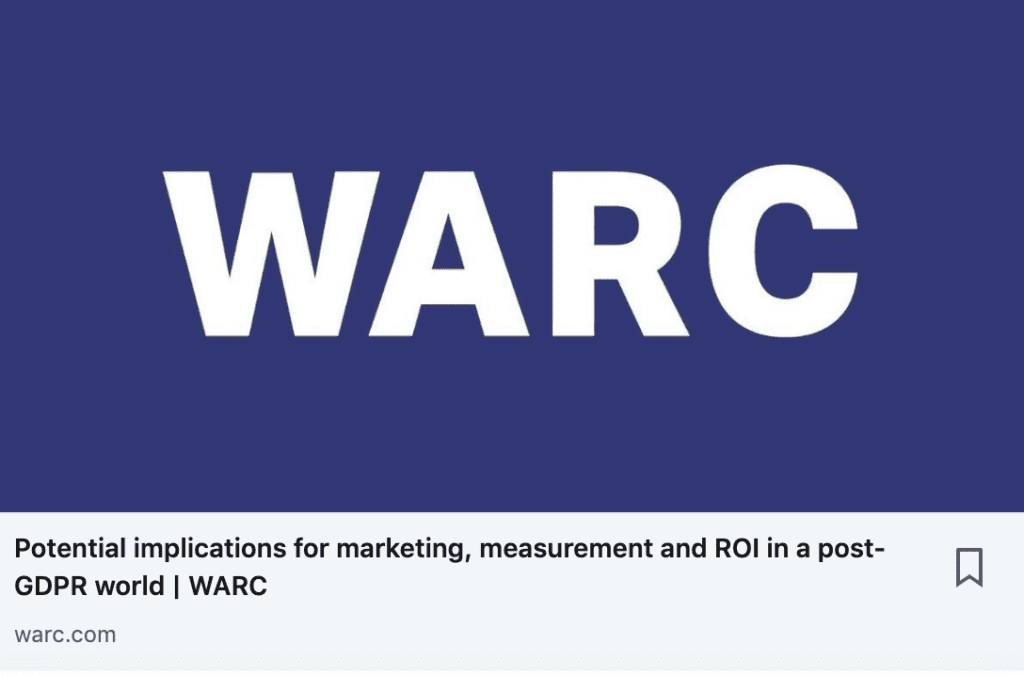*This is an except from a larger piece written for WARC AdMap in their May 2019 edition. To view the full piece, visit www.warc.com
With nearly one year under its belt, the implications surrounding marketing and digital measurement in a post-GDPR world are just beginning to emerge.

Multi-Touch Attribution (MTA), the model that utilizes digital data to attribute MROI, is no doubt the big question to answer when it comes to impact from the GDPR. High profile incidents such as the Cambridge Analytica scandal have encouraged tech giants Facebook, and Google among others to revise the flow of data within their platforms. As Larry Cohen points out in a Marketing Land article, “MTA is only going to get harder due to platform changes and a focus on privacy. Platforms like Google, Amazon and Facebook have restricted cross-platform tagging for their proprietary solutions, while party vendors are pixel-based solutions with limits to where their pixels catch consumer signals.”

Our point of view: rather than modeling at a cookie-level data, analysts will need to aggregate data and conduct more of a top-down analysis at a collective level. By aggregating the data, you omit the need for opt-in’s as you no longer see individual digital activity, but rather group trends. This aggregated approach to measuring consumer demand needn’t be at the expense of detailed insights. Dynamic Hierarchical Bayesian Marketing Mix Modeling (MMM) at a customer segment level, is a viable, mature alternative that remains relatively unharmed by GDPR restrictions. This is because MMM is a time-series analysis of essentially anonymized data, instead of digital data which is an event level analysis of individuals data. More granular MMM can still drive similar insights to traditional MTA when using slightly aggregated digital data.
To read more in depth about the potential implications for Marketing, Measurement and ROI in a Post-GDPR World, see our published article in WARC’s AdMap here: http://bit.ly/301NCDT
